
There are many options for wood finish products and coatings on the market, so how do you choose?
In this case study we walk you through finding some appropriate methods and products for historic materials using our approach on the arcade ceilings of a private university in California.
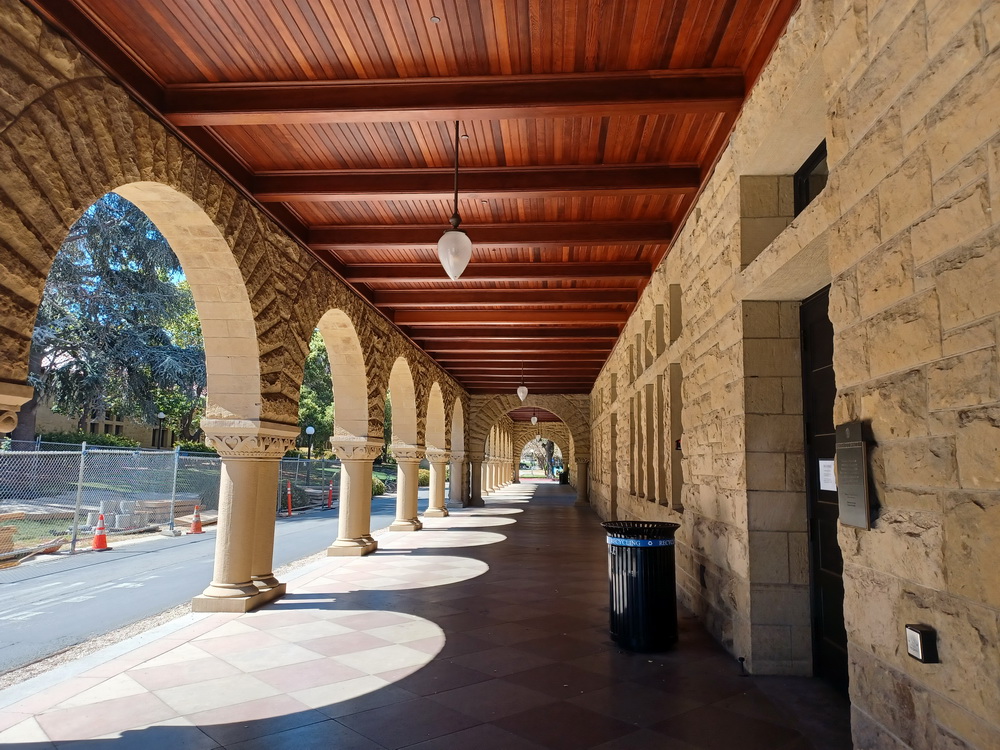
Over the years there have been many interventions in sections of the arcade ceilings, from cleaning to refinishing, to painting. This has resulted in an appearance that varies from section to section and quadrant to quadrant. Due to the historic nature of these buildings, their visibility, and their age, we found it was imperative to approach this with meticulous testing to present a wide range of options for the sake of authenticity and to better understand the scale and scope of work that would be required to return the ceilings to a uniform appearance based on what they would have looked like originally.
Background:
The first steps for this project took place long before any on site testing or mock-ups. We started with a finishes analysis where small samples were removed from several locations at the ceilings in order to determine the earliest finish treatment on the wood. At this time, we also considered the appearance of the tongue and groove ceilings in the varies spaces within the site, as several are still original. We were able to identify that the earliest finishes on the ceilings were a reddish stain followed by a layer of clear varnish.
This was followed by extensive research into finishing techniques and materials that would have been popular and available in the region at the time of construction, as well as a deep dive into the documentation the university retains of the early days of their construction and work following the 1906 Earthquake.
Wood Finishes & Coating Analysis:
There are three main categories of wood finishes available today:
- Historic coating systems utilize traditional materials and application methods. Many of these are only available as specialty products in limited quantities and include solvent-based and oil-based finishes such as tinted shellacs, and varnishes.
- Modern historic coating systems utilize a mix of modern and historic materials and application methods. These include penetrating and gel stains followed by a clear finish such as a modified spar varnish or water-based polyurethane that can be penetrating or film-forming. Modern historic coating systems are almost always multi-component systems.
- Modern coating systems are composed of modern materials and modern application methods. These include integrally colored film-forming coatings whose transparency can vary. These are usually single-component systems.
Several examples of each of these systems were utilized in the early testing stages for the arcade ceilings.
Material Testing:
The next goal of our testing was to provide a visual example and methodologies of various coatings applications of what the finished ceiling most likely looked like, so that this could inform future refinishing decisions. In order to accurately depict these finishes samples of redwood of a similar age to the arcade ceiling were obtained. These samples consisted of previously installed redwood interior trim.
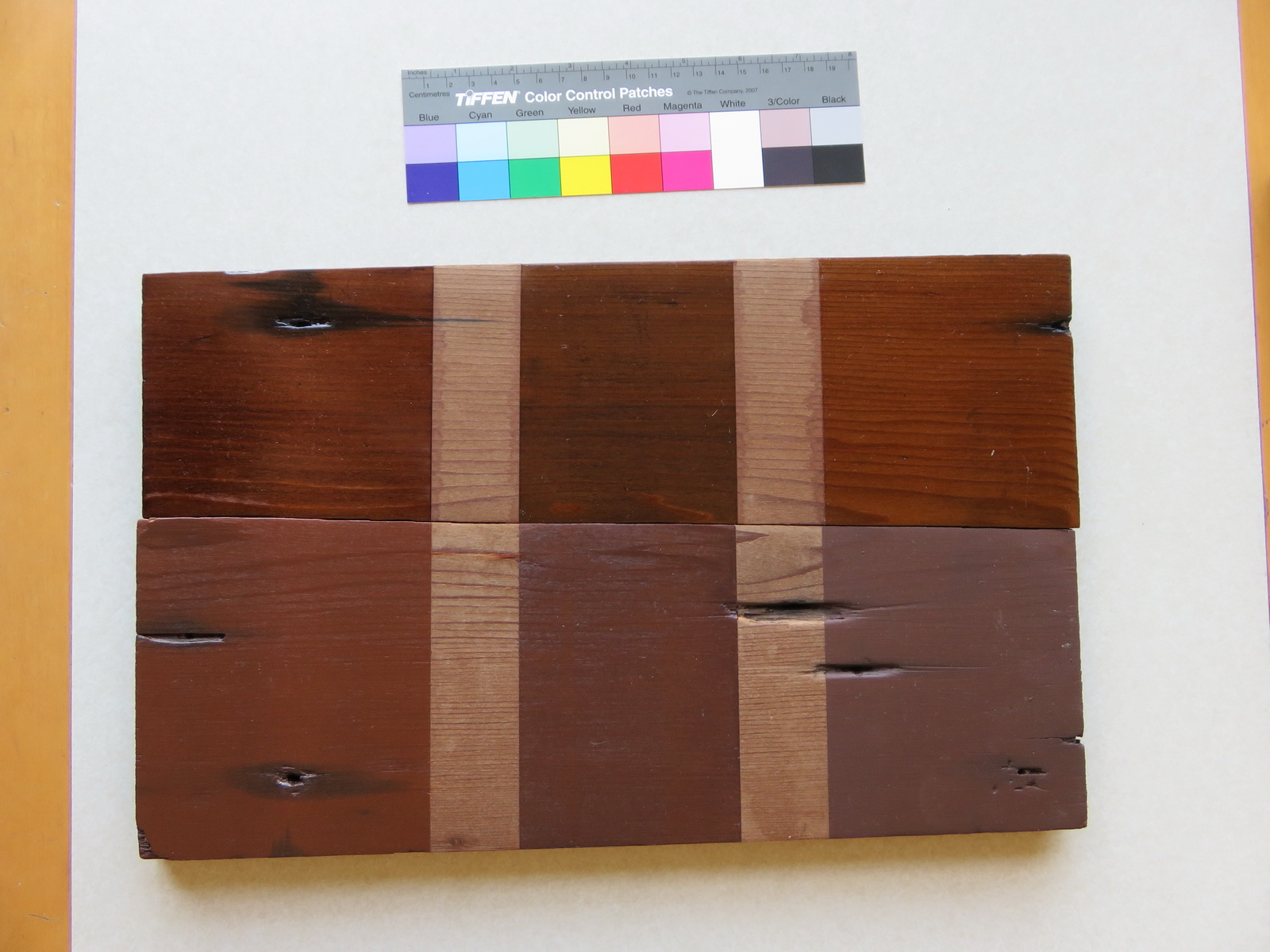
Sample Coating Types: Products representative of each of the coating types discussed in this post include (left) a clear tinted varnish (center) a wood stain and spar varnish (right) an acrylic-based semi-solid wood stain.
Samples of several types of stains were tested on redwood panels including gel stains, wiping stains and pigmented top coats. They were assessed on how quickly color developed on the wood and ease of use. Similarly, several types of top coats were also tested. The top coats were assessed on their overall appearance and ease of application including how long they took to dry.
After a discussion with the client about the time, materials, and appearance of the samples, it was decided to move forward with a gel stain and conduct additional testing with a range of clear top coats. From this stage we prepared to conduct large-scale stain color and top coat testing on site at the arcade ceilings.
Methodology for Large Scale Mock-Ups:
- Cleaning and Finish removal: To remove dirt and debris and bring the wood surface to a uniform texture, the wood was wet sanded by hand and left to dry. Sanding was chosen as the method of finish removal, rather than chemical stripping because it decreased the amount of water absorbed by the wood. Excess water can cause blotchiness and uneven staining.
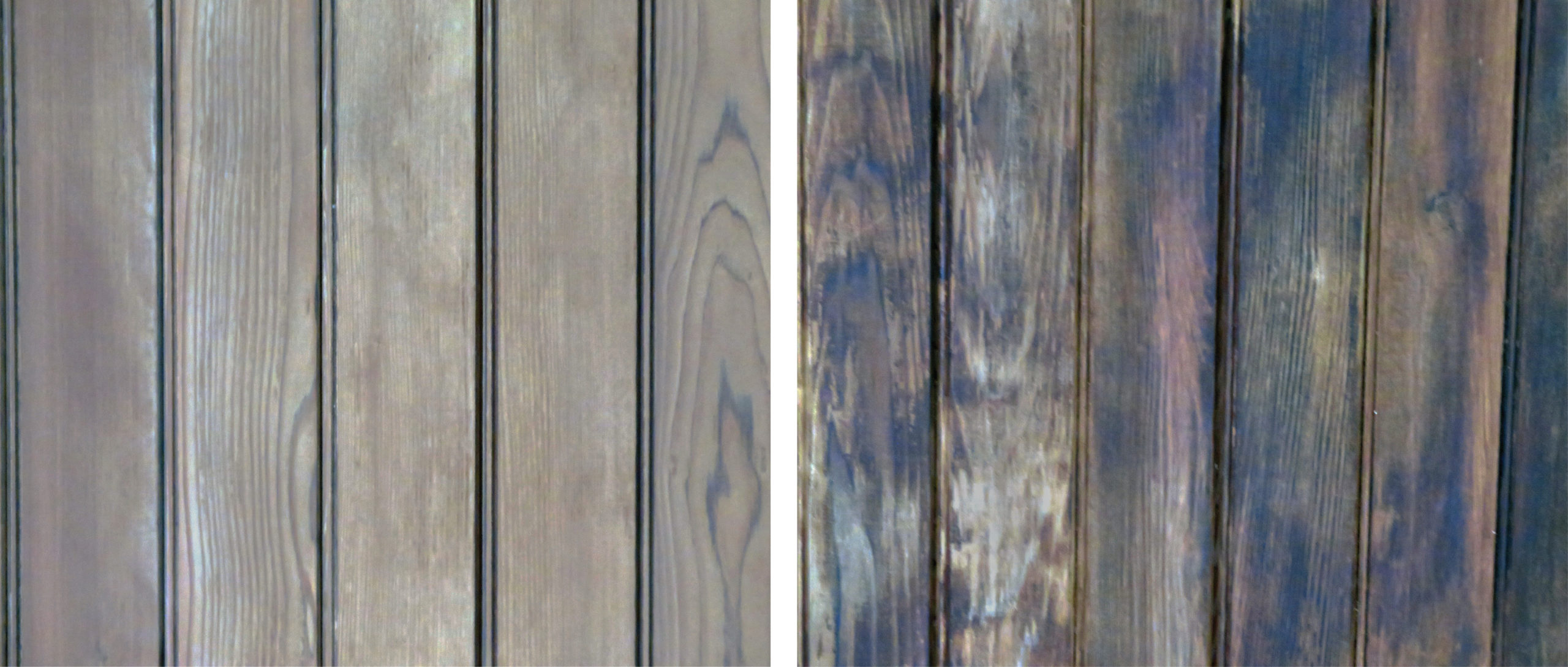
Sanded wood (left) and chemically stripped and rinsed wood (right)
- Shellac Pre-treatment: Once sufficiently dry, one layer of shellac was spray-applied, with care taken to prevent overspray and oversaturation of the wood using cardboard, plastic sheeting, and tape. The purpose of the shellac treatment is to seal the larger pores of the wood to slow the absorption of the stain in more porous areas. Due to existing variation in the boards at the ceilings, this step resulted in an overall more uniform appearance.
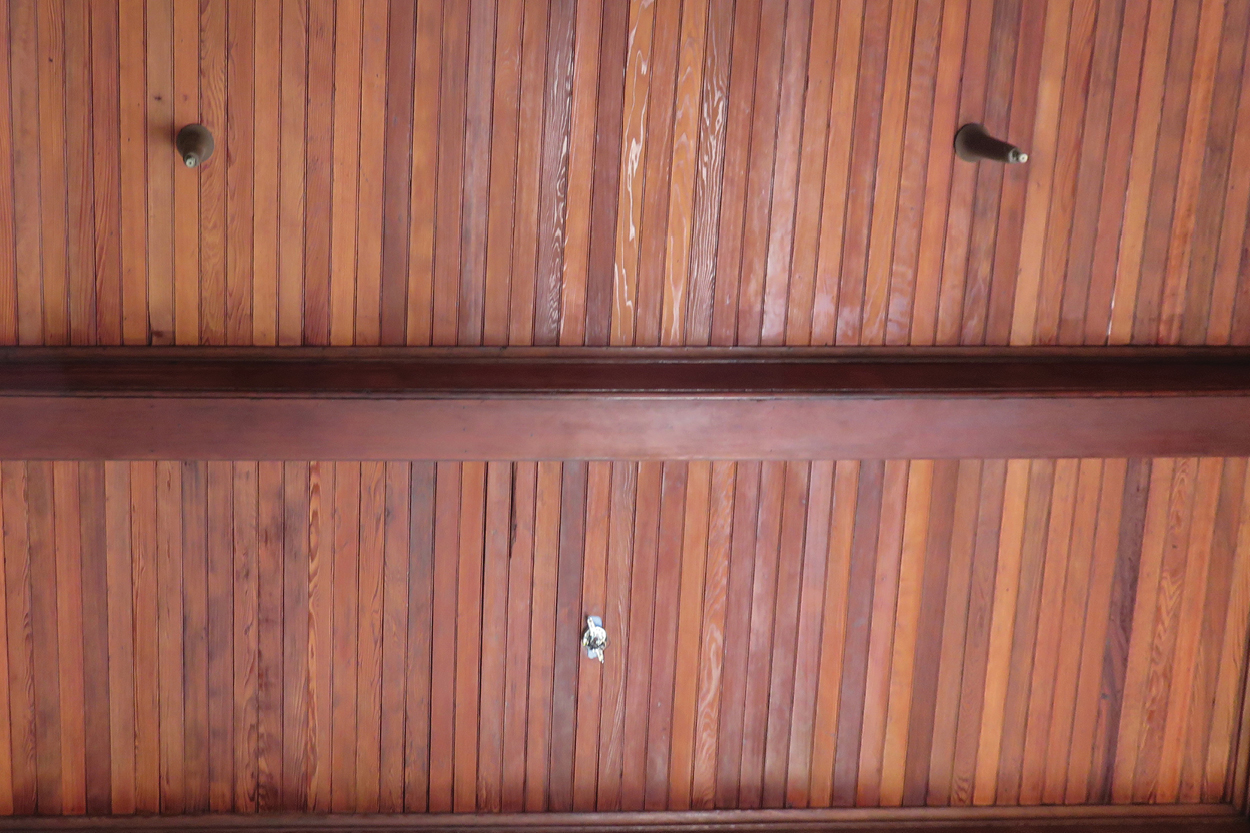
Shellac application
- Stain Testing & Application: Samples of several types of stains were tested on redwood panels including gel stains, wiping stains, and pigmented top coats. They were assessed on how quickly color developed on the wood and ease of use.
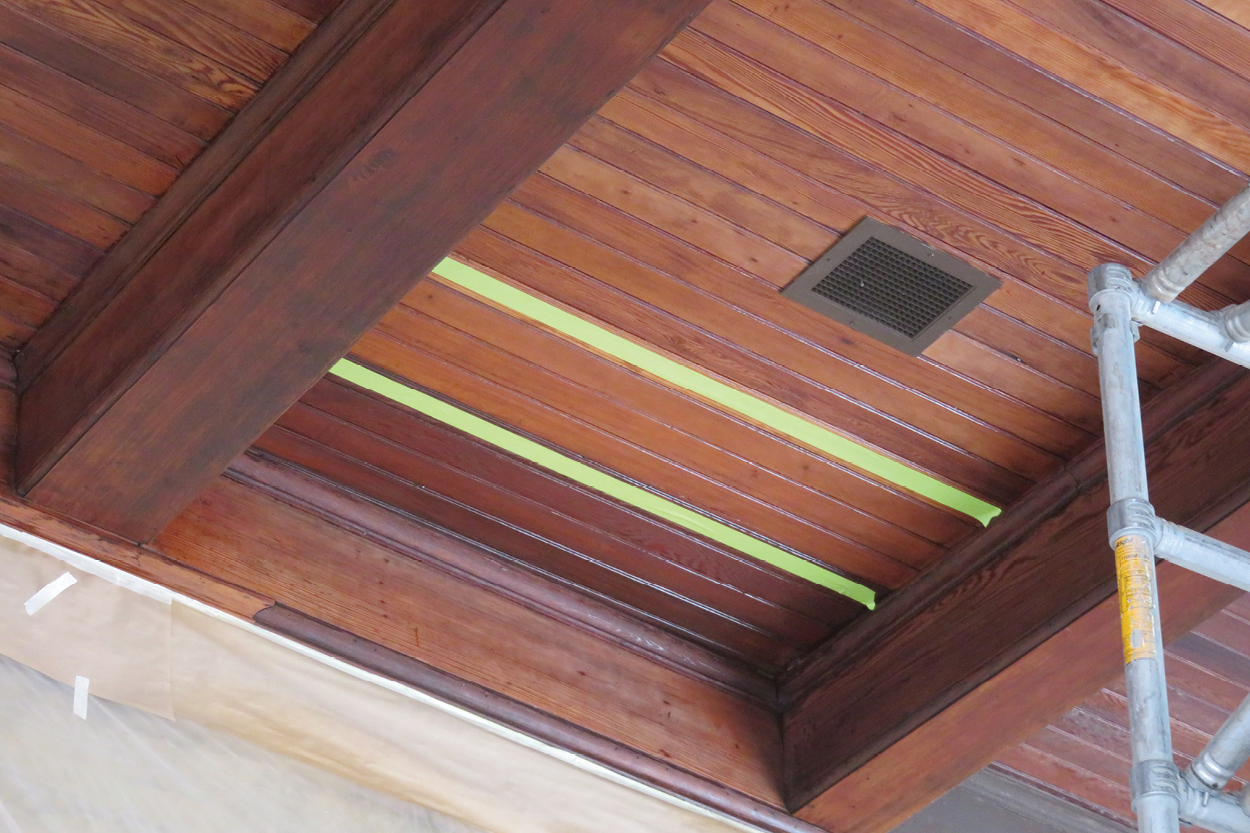
Stain testing
- Top Coat Testing: Samples of several types of top coats were tested. Most were clear, others such as the amber varnishes, contained a hint of color. In the case of the modern coatings, these were applied as top coats on the clean, bare wood.
Each topcoat was spray applied and back-brushed, or brush-applied in the direction of the grain. A total of three layers of each coating were applied, with each layer lightly sanded between coats. Some coatings required longer dry times than others due to their difference compositions and chemistries. The top coats were then assessed on their overall appearance and ease of application including how long they took to dry. From this stage, we prepared to conduct large-scale stain color and top coat testing on site at the arcade ceilings.
Large-Scale Mock-Ups:
The chosen gel stain color was applied to the rest of the ceiling, with care taken to ensure that work was consistent in the time between when the stain was brushed on and when it was wiped off.
In order to better understand the impact of the top coats on the ceiling appearance throughout the day, four products were tested in two different sheens and were monitored by the university.
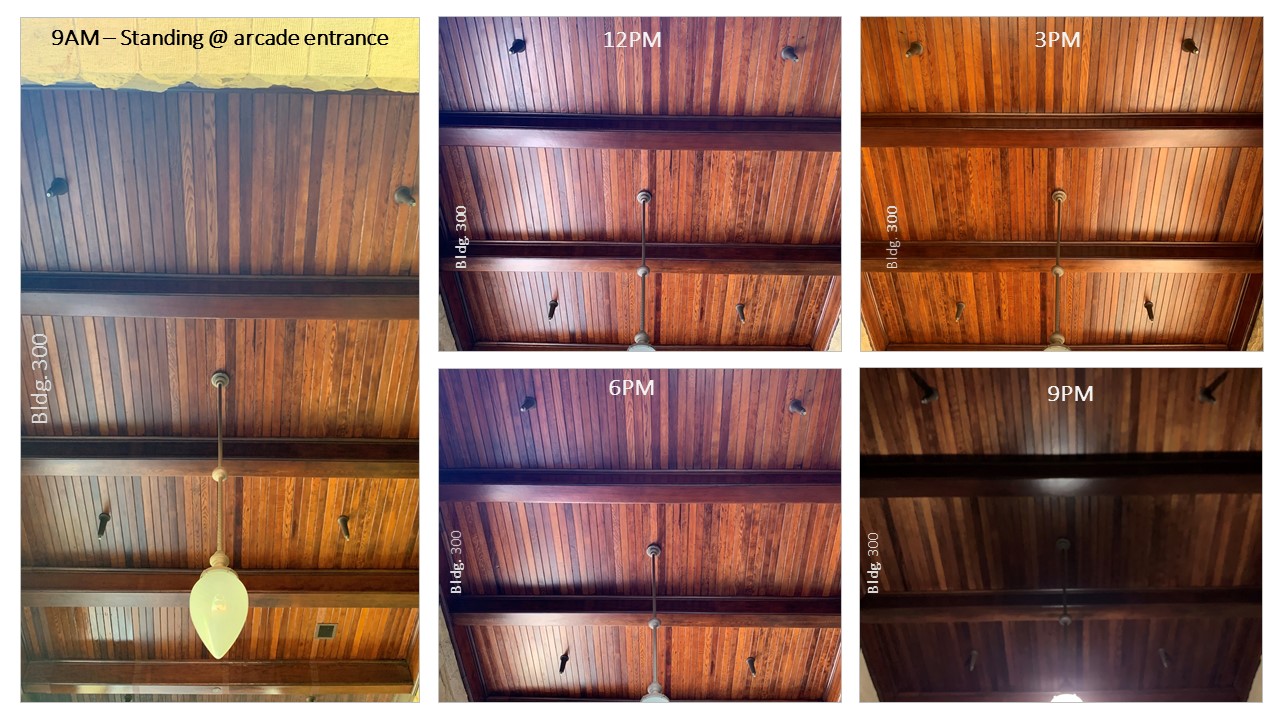
Courtesy of the client
Recommendations:
Based on the results of the mock-up, ARG recommended that future refinishing of the arcade ceilings include the following:
- Finish removal via dry sanding, with dust control using HEPA vacuums and damp sanding blocks or rags as needed.
- Shellac application on the clean and stripped boards.
- Application of a gel stain in a color chosen by the University during the stain color testing.
- Application of a three-coats of an oil-based spar marine varnish with a satin finish.
There are many factors to consider in a wood restoration project. In the case of the arcade ceilings, several steps of sample testing allowed us to document every step of the refinishing process and provide detailed recommendations and justifications for certain steps that were recorded for future reference.
We recommend several materials testing and mock-ups for a successful project.
For advice or help with this, contact us.
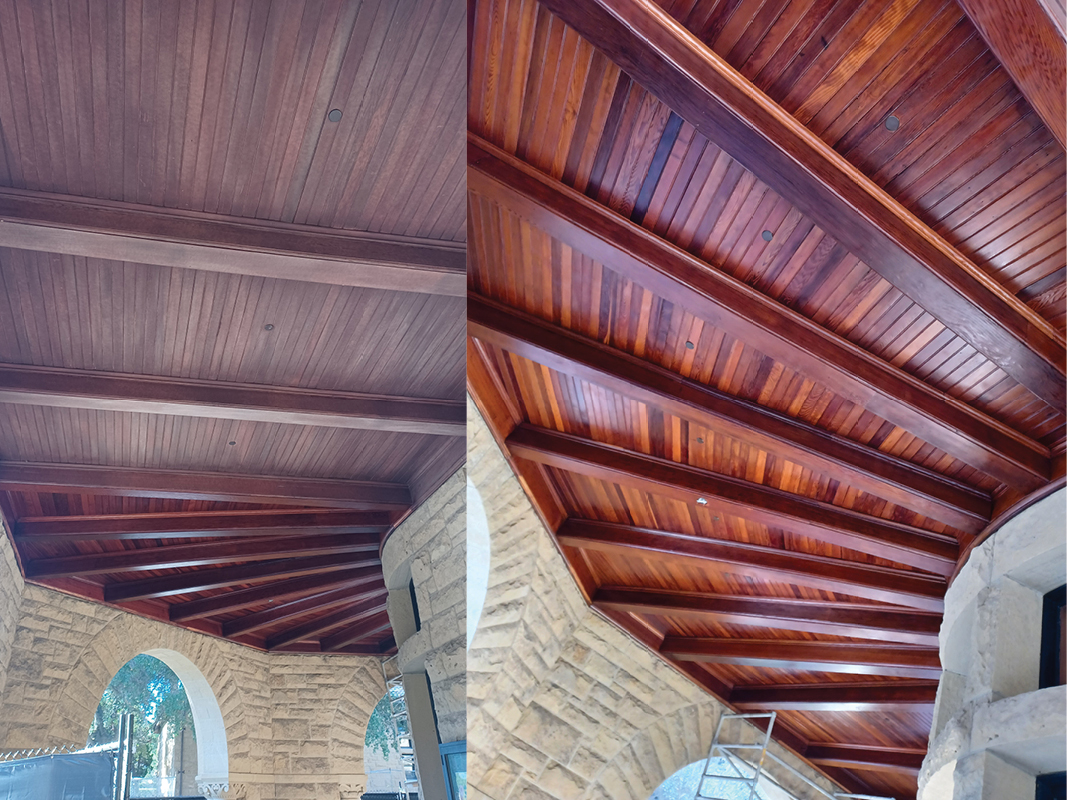
Please note that information and recommendations compiled in this report relate directly to the arcade ceilings at this university. Other areas can experience very different conditions and require different considerations.
